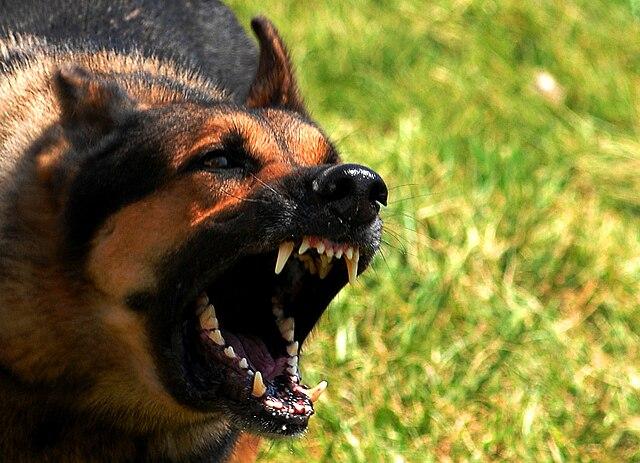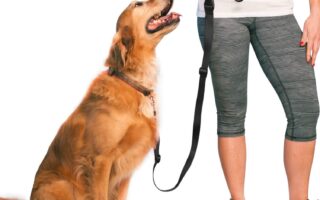In the vibrant tapestry of canine behavior, few threads provoke as much curiosity—and concern—as dog aggression. From the spirited bark of a playful pup to the low growl of a protective guardian, our canine companions express a wide range of emotions and instincts that can sometimes spiral into unwanted aggression. Understanding this complex phenomenon is essential not only for dog owners but for anyone engaged in the rich interplay of human-animal relationships. In this exploration, we will unravel the multifaceted nature of dog aggression: its origins, the underlying triggers, and the strategies available to foster a peaceful coexistence with our four-legged friends. Whether you are a dog owner, a trainer, or simply a dog enthusiast, gaining insight into this behavior can enhance the safety and joy of our interactions with these beloved animals. Join us as we delve into the world of dog aggression—where understanding breeds harmony.
Table of Contents
- Understanding the Roots of Dog Aggression: Unpacking the Triggers
- Recognizing Warning Signs: How to Identify an Aggressive Dog
- Effective Training Techniques: Building a Calm and Confident Canine
- Creating a Safe Environment: Strategies for Managing Aggression in Dogs
- Q&A
- The Conclusion
Understanding the Roots of Dog Aggression: Unpacking the Triggers
Understanding dog aggression requires a deep dive into the animal’s psyche, as various factors can provoke such behavior. Genetic predispositions often play a significant role, indicating that some breeds may have a higher tendency for aggressive traits due to their lineage. Environmental factors are also crucial; dogs raised in a stressful setting may develop fear-based aggression, reacting defensively to perceived threats. Notable triggers include:
- Fear: Many aggressive dogs are responding to anxiety or fear of the unknown.
- Territoriality: Protecting their space or people can lead to aggressive displays.
- Frustration: This can occur when a dog is restrained yet motivated to chase or engage.
Socialization—or lack thereof—significantly impacts a dog’s behavior. Dogs that have had limited exposure to various stimuli and experiences may not know how to behave in unfamiliar situations, leading to aggression out of confusion or fear. Additionally, health issues like pain or discomfort can also trigger aggressive responses, making it essential for pet owners to consider the whole picture. The following table highlights some common triggers and potential responses:
| Trigger | Common Response |
|---|---|
| Stranger Approaching | Growling or Barking |
| Another Dog in Proximity | Snapping or Lunging |
| Owner’s Direct Approach | Backing Away or Cowering |
Recognizing Warning Signs: How to Identify an Aggressive Dog
Identifying an aggressive dog can be challenging but is crucial for ensuring safety for both the dog and those around it. Certain physical cues and behavioral changes can serve as warning signs of potential aggression. Watch for the following indicators:
- Rigid body posture: A tense stance or held tail can suggest a dog is on high alert.
- Barred teeth: Snarling with teeth visible often signals a warning.
- Growling or barking: Deep, low growls or loud, persistent barking can indicate frustration or fear.
- Fixated gaze: A dog that maintains eye contact without breaking can signify a threat.
- Raised hackles: Fur along the back standing up might show the dog is agitated.
In addition to physical signs, observing a dog’s specific reactions to situations can provide insight into its temperament. Pay attention to a dog’s behavior in various environments and interactions:
| Behavior | Potential Interpretation |
|---|---|
| Backing away | Fear or discomfort |
| Stiff tail wagging | Possible sign of irritation |
| Marked increase in barking | Alertness or territorial response |
| Attempting to “herd” people | Possessiveness or protective instinct |
Effective Training Techniques: Building a Calm and Confident Canine
When addressing canine aggression, the key lies in creating a structured and nurturing environment that emphasizes positive reinforcement. To start, it’s essential to identify the triggers of aggressive behavior, which may include fear, territorial instincts, or social anxiety. Building trust should be a priority; gentle introductions to new experiences and controlled socialization can help alleviate stress. Training sessions that incorporate rewards not only reinforce good behavior but also foster a sense of calm and confidence in your dog. Use the following techniques for effective training:
- Desensitization: Gradually expose your dog to their triggers at a distance until they become comfortable.
- Counterconditioning: Change your dog’s emotional response to a previously feared object or situation by pairing it with something they love.
- Consistent Commands: Ensure that commands are consistently used and taught to instill a sense of security and understanding.
Incorporating structured training schedules allows dogs to anticipate activities and reduces anxiety. When implementing these techniques, it’s crucial to remain patient and to recognize the individual personality of your pet. Remember, building confidence takes time, and the journey should be enjoyable for both the handler and the dog. Here’s a simple table to clarify the outcomes of different training approaches:
| Technique | Expected Outcome |
|---|---|
| Desensitization | Reduced fear responses in various situations. |
| Counterconditioning | Positive associations formed with previously negative stimuli. |
| Consistent Commands | Enhanced communication and trust between handler and dog. |
Creating a Safe Environment: Strategies for Managing Aggression in Dogs
To effectively manage aggression in dogs, it’s essential to first understand the triggers that can provoke such behavior. Common factors include fear, territorial instincts, and frustration. By identifying these triggers, you can create a safer environment for both your dog and others. Here are some practical strategies to reduce aggressive tendencies:
- Routine Socialization: Regularly expose your dog to different environments and stimuli to help them feel more comfortable.
- Positive Reinforcement: Use treats and praise to reward calm behavior, helping dogs associate positive experiences with typical triggers.
- Controlled Training Sessions: Engage in obedience training to reinforce good behavior and establish commands that can redirect aggression.
Additionally, maintaining a structured home environment can aid in minimizing aggressive displays. Creating a personal space where your dog can retreat when feeling overwhelmed can significantly reduce stress. Here’s a quick reference of essential elements for your dog’s safe space:
| Element | Description |
|---|---|
| Comfortable Bedding | A cozy spot where your dog can relax and feel secure. |
| Quiet Zone | A designated area away from high traffic and noise, allowing for peace. |
| Toys & Chews | Engaging toys that can help distract and calm your dog during stressful moments. |
Q&A
Q&A: Understanding Dog Aggression
Q1: What is dog aggression, and what are its common types?
A1: Dog aggression refers to behaviors displayed by a dog that are intended to threaten or harm another dog, animal, or human. Common types include territorial aggression, where dogs protect their space; fear-based aggression, which occurs when a dog feels threatened; possessive aggression over food or toys; and social aggression, which arises during interactions with unfamiliar dogs or people. Recognizing the type can help in addressing the behavior appropriately.
Q2: What are some of the signs of aggression in dogs?
A2: Aggression can manifest in various ways. Signs include growling, baring teeth, lunging, snapping, and in severe cases, biting. Less obvious signals might involve stiff body posture, raised hackles, or intense staring. Observing these behaviors in context is crucial; sometimes, what appears to be aggression is simply a dog’s way of communicating stress or discomfort.
Q3: What causes dogs to become aggressive?
A3: The roots of aggression in dogs can be multifactorial. Genetics play a role; certain breeds may have tendencies toward aggression if not socialized properly. Environmental factors, such as past traumas or abuse, can exacerbate aggressive behaviors. Additionally, lack of proper training or socialization can lead to misunderstandings in social contexts, worsening aggression over time.
Q4: Can aggressive behavior in dogs be modified or trained?
A4: Yes, aggressive behavior can often be modified through a combination of proper training, socialization, and behavior modification techniques. Consulting a professional dog trainer or animal behaviorist is highly recommended. Positive reinforcement methods—rewarding desirable behaviors rather than punishing aggressive ones—tend to be the most effective approach. Consistency and patience are key.
Q5: How can dog owners prevent aggression in their pets?
A5: Prevention starts with early socialization. Introduce your dog to a variety of people, pets, and environments during their formative months. Training should consist of obedience commands and establishing clear boundaries. Regular exercise also helps release pent-up energy which can lead to frustration and aggression. Moreover, being aware of stressors and maintaining a calm demeanor can prevent aggression triggers from escalating.
Q6: When should a dog owner seek professional help regarding aggression?
A6: If a dog displays any form of aggression that includes biting or poses a risk to other animals or people, it’s time to seek professional help. Early intervention is crucial, especially if the aggressive behavior becomes more frequent or severe over time. An animal behaviorist can help assess the situation, create a tailored plan, and ensure the safety of everyone involved.
Q7: Is it safe to own an aggressive dog?
A7: Owning a dog with aggressive tendencies can be safe, but it requires heightened awareness, commitment to training, and responsible management. Each situation is unique. Owners must understand their dog’s triggers and behaviors, always err on the side of caution, and ensure that appropriate measures are in place to protect both the dog and those around them.
Q8: What role does breed play in dog aggression?
A8: While some breeds may be predisposed to certain aggressive traits, it is vital to remember that individual temperament varies widely within breeds. Many aggressive behaviors are learned or caused by circumstantial factors rather than genetic predisposition alone. Responsible breeding, socialization, and training are far more influential in shaping a dog’s behavior than breed alone.
By understanding the complexities surrounding dog aggression, we can better support responsible pet ownership and foster safer interactions—whether between dogs or with the humans who love them.
The Conclusion
As we conclude our exploration of dog aggression, it becomes clear that understanding and addressing this complex behavior requires a delicate balance of knowledge, patience, and compassion. While the instinctive roots of aggression can sometimes seem daunting, they also offer an invaluable opportunity for growth and connection between dogs and their humans. By fostering an environment of learning, empathy, and responsible ownership, we can pave the way for healthier relationships and a safer community for all.
Remember, every dog is a unique individual, shaped by experiences and influences that may not always be visible. Armed with the insights gleaned from this discussion, we can become more attuned to their needs, recognizing the signs of distress and addressing concerns with proactive, positive strategies. In this way, we not only safeguard our furry companions but also enhance our shared journey—a journey filled with love, loyalty, and mutual respect. So, let us step forward together, committed to unraveling the nuances of canine behavior, and fostering a world where every wagging tail can thrive without fear.



